History
Eighteen Centuries of the Orthodox Greek Church
ISBN: 1-59333-051-0
Using the Seven Ecumenical Councils as backbone, Hore provides the reader with an overview of the Greek Orthodox Church. Writing in an era when the Oxford Movement was reaching a wide array of Anglicans with the forgotten connections with orthodoxy, Hore presents a sympathetic view of Byzantine Christianity. Following the trials and difficulties of the early church after it received imperial approval, a sketch of the Greek Church, including the "separatist" Churches, emerges.
$204.00
The Book of Calendars
Conversion Tables for Ancient, African, Near Eastern, Indian, Asian, Central American and Western Calendars
By Frank Parise
ISBN: 1-931956-76-6
The book provides easy-to-use tables that translate the calendars of over sixty civilizations into the Julian and Gregorian calendars. An indispensable tool for scholars.
$126.00
A Woman in the Sahara
By Helen Gordon
ISBN: 1-931956-77-4
This is a fascinating travel journey through the Sahara that began in 1912, by one of the most well- traveled women of the early twentieth century. Gordon paints the picture of the Sahara and its inhabitants through the eyes of a woman.
$127.00
Ventures Among the Arabs in Desert, Tent and Town
ISBN: 1-931956-78-2
The story of a Christian missionary who lived for thirteen years amongst the Ishmaelites of Moab, Edom, and the great peninsula of Arabia. Forder says, “My story is a simple record of ventures just as they occurred, a transcript of personal experiences and beliefs. It is sent forth to what I believe is a sympathetic public.”
$121.00
To Jerusalem through the Lands of Islam, Among Jews, Christians & Moslems
By M. H. Loyson
ISBN: 1-931956-92-8
This book stresses the need for unity among the believers of God: Jews, Muslims, and Christians. "We must read it – or rather we must travel with her, for truth guides her pen, as charity has guided her steps."--Prince de Polignac, Colonel of the French Army in Algiers (1897)
$123.00
Arabic Proverbs and the Manners and Customs of Modern Egyptians
ISBN: 1-931956-84-7
A compilation and translation of Arabic proverbs by an early 19th century traveler in Cairo, Egypt. Entries are arranged alphabetically in Arabic and by number. Cultural and figurative explanations are provided in English.
$102.00
The Institutes of Roman Law
By Rudolph Sohm
ISBN: 1-59333-006-5
This is an indispensable reference to Roman Law, with an introductory essay by Erwin Grueber of Balliol College, Oxford. Sohm presents a systematic and historical exposition of Roman private law, introducing a new element into the legal studies of the English-speaking world.
$220.00
The Land of Moab: Travels & Discoveries on the East Side of the Dead Sea & Jordan
ISBN: 1-59333-081-2
The object of Tristram's expedition was a careful examination of the then-contemporary state of a country frequently referred to in the Old Testament, and intimately connected with Jewish history, but which had not been traversed at leisure by any explorer since the fall of the Roman empire.
$195.00
The History of Alexander the Great
Series: Kiraz Chronicles Archive 3
ISBN: 1-59333-011-1
This is a Syriac edition, with English translation, of the folk-lore and legends connected to Alexander the Great. This ancient text represents a Greek text that is much older than any other known version.
$252.00
Extracts from the Ecclesiastical History of John Bishop of Ephesus
Series: Kiraz Chronicles Archive 12
ISBN: 1-59333-015-4
Composed in three parts, the book chronicles a critical period in the Syriac Orthodox Church, and represents the greatest literary work by the author. It includes grammatical, historical, and geographical notes in English and German.
$115.00
Narrative of a Visit to the Syrian [Jacobite] Church of Mesopotamia
ISBN: 1-59333-022-7
Southgate's encounters with the Syriac-speaking Christians of Turkey shed a light on the life and status of this ancient Christian minority.
$154.00
After Life in Roman Paganism
By Franz Cumont
ISBN: 1-931956-37-5
Through the course of eight lectures, Franz Cumont gives a thorough investigation of the afterlife in Roman pagan thought. He covers topics such as the afterlife, celestial immortality, untimely death, the sufferings of hell and metempsychosis, the felicity of the blessed, the journey to the beyond, and more.
$88.00
A History of Freedom of Thought
By J. B. Bury
ISBN: 1-931956-39-1
This is a classic book on the history of freedom of thought, covering ancient Greece and Rome, the Middle Ages, and the Renaissance. In addition, this early monograph deals with the Reformation, followed by the seventeenth, eighteenth, and nineteenth centuries.
$63.00
Vergil in the Middle Ages
ISBN: 1-931956-35-9
Long before its translation into English, this book secured its author a permanent place in the ranks of European philologists. Comparetti depicts a comprehensive history of the medieval conception of Vergil, then seeks to determine their nature, causes, and connection with European thought.
$125.00
A Homeric Dictionary For Use in Schools and Colleges
By Robert Keep
ISBN: 1-59333-027-8
A necessary tool for any student of classics or Homer. A novel feature of the work is the introduction into the text of nearly one hundred and fifty small wood-cut images of various topics.
$119.00
Demosthenes and the Last Days of Greek Freedom 384-322 BC
ISBN: 1-59333-030-8
This is a reprint of the classical study by Pickard-Cambridge about Greece's most famous political orator, Demosthenes. It deals with his role in the last struggle of the Greeks for freedom against the Macedonian Empire.
$176.00
The Roman Festivals of the Period of the Republic
By W. W. Fowler
ISBN: 1-59333-003-0
W. Warde Fowler's book gives a detailed commentary on Roman religious festivals for each month of the year, covering both public and non-public worship.
$180.00
S/He Created Them
Feminist Retellings of Biblical Tales
By Naomi Graetz
ISBN: 1-59333-057-X
A contemporaneous and religiously meaningful retelling of biblical stories by a feminist who looks at intimate lives of people inhabiting the Bible. She rediscovers a past in which biblical women actively participated and suggests women’s leadership might lead to a better world.
$61.00
The Monuments of Nineveh
From Drawings Made on the Spot
ISBN: 1-59333-068-5
The companion volume to Nineveh and Its Remains. This large (11x17), handsome volume, carefully reproduced from the original edition of 1849-53, and bound in deluxe cloth, contains 170 drawings made by Layard of sculptures, bas-reliefs, and other objects discovered by him among the ruins of Nineveh.
$1,268.00 $490.00
Nineveh and Its Palaces
The Discoveries of Botta and Layard, Applied to the Elucidation of Holy Writ
ISBN: 1-59333-067-7
The author presents the discoveries of Botta and Layard and applies them to the writings of the Bible. This third edition charts all the discoveries made in the 1800s with chronological tables. The volume contains 273 illustrations.
$225.00
Life in the Moslem East
ISBN: 1-931956-87-1
Pierre Ponafidine, an Imperial Russian diplomat who served in Ottoman Turkey and Persia, gives a series of studies of certain phases of the life, religion, and customs of people among whom he passed thirty-six years of service.
$159.00
Gnostic Ethics and Mandaean Origins
ISBN: 1-931956-85-5
In opposition to other leading scholars of the Mandaeans, Yamauchi concludes that the Mandaeans could not have originated before the second century CE. He notes their distinguishing characterisitcs from other Gnostic groups.
$85.00
Eastern Christians, The Last Arameans
ISBN: 1-59333-077-4
The first and only extensive treatment of the genocide of the Aramaic-speaking Christians of the Middle East, in particular the Syriac Orthodox communities, in the late 1800s and early 1900s under the Ottomans. Courtois bases his study on the diplomatic archives of the French Foreign Affairs office (Quai d'Orsay), the archives of the Dominican Mission at Mosul, Iraq, written eyewitness accounts, and oral interviews with genocide survivors conducted by the author.
$184.00
The Nestorians or The Lost Tribe
With a New Introduction by H.L. Murre-van den Berg
By Asahel Grant
ISBN: 1-59333-154-1
Grant gives an account of his interactions with the "Nestorians", arguing that they “are indeed the representatives and lineal descendants of the Ten Tribes.” His vivid descriptions of their lives and traditions are a valuable resource on the "Nestorian" Christians in the early 1800s.
$106.00
The Akītu Festival (hardback)
Religious Continuity and Royal Legitimation in Mesopotamia
Series: Gorgias Near Eastern Studies 2
ISBN: 1-59333-158-4
The akītu festival is one of the oldest recorded religious festivals in the world, celebrated for several millennia throughout ancient Mesopotamia. Yet, the akītu was more than just a religious ceremony; it acted as a political device to ensure the supremacy of the king, the national god, and his capital city. Using tools of social anthropology and ritual analysis, this book presents a detailed reconstruction of the festival events and its attendant rituals to demonstrate how the festival became a propagandistic tool wielded by the monarchy and ruling classes. The akītu festival demonstrates the effectiveness of religion as a political tool.
$124.00
Filter by
Filter by price
Filter by manufacturer

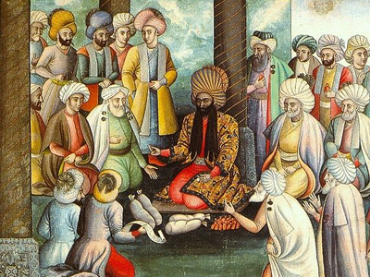
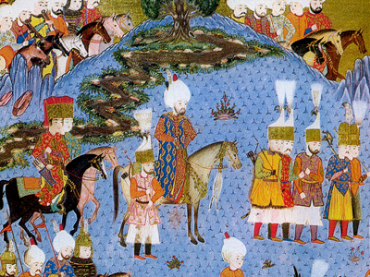

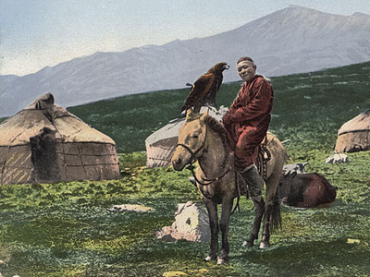
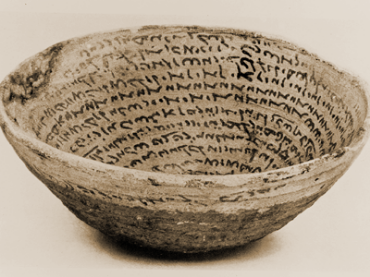

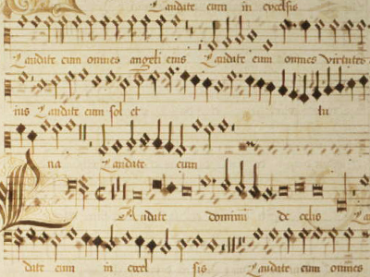
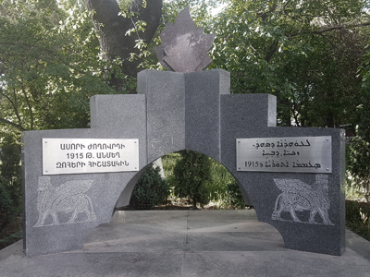










![Show details for Narrative of a Visit to the Syrian [Jacobite] Church of Mesopotamia Picture of Narrative of a Visit to the Syrian [Jacobite] Church of Mesopotamia](https://gorgiaspress450.forefrontinfotech.com/images/thumbs/0011275_360.png)













